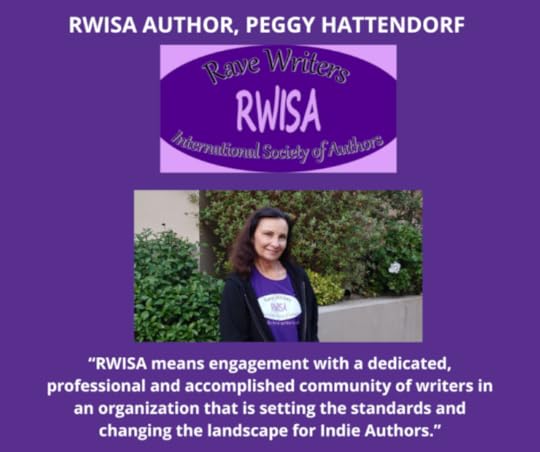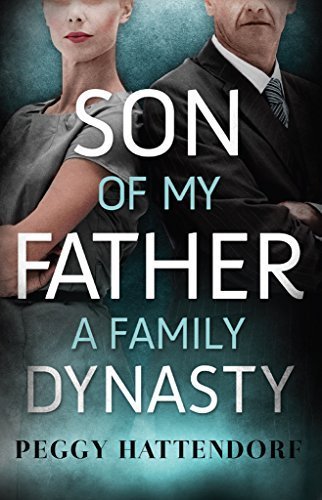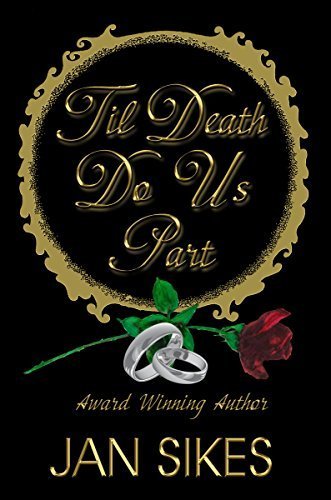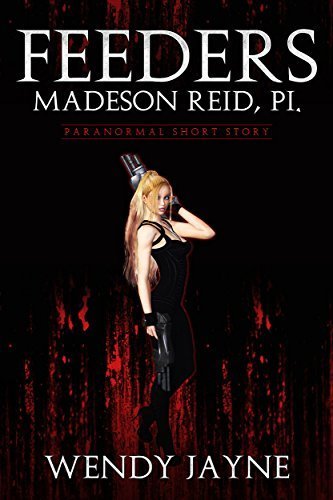Ronald E. Yates's Blog, page 72
February 18, 2020
WELCOME TO THE FINAL DAY OF THE #RWISA “REVOLUTION” BLOG TOUR! @JOHNJFIORAVANTI #RWISAREVOLUTIONTOUR
Welcome to Day 10 and the final day of the RWISA “REVOLUTION” Blog Tour! We’d like to introduce you to an amazing supporter and RWISA member, Author, John Fioravanti.
We ask that you click on the author’s RWISA Profile below and visit all of his profile pages – some offering more insight into the member and others showcasing the author’s writing talent.
Lastly, we ask that you support this member as well as the host of this blog, by sharing this page and the author’s profile pages across all your social media platforms.
RWISA Profile
What John has to say about RWISA…

John has a book he’d like to introduce you to:
“REFLECTIONS”

Now, we’d like to give you a chance at some of this awesome promotion for yourself!
Have you written that book or short story you want the whole world to know about? Are you looking for a great way to promote your creative endeavors? Perhaps you’re seeking to add some prestige to your body of work! If this sounds like you, we invite you to come on over to RAVE WRITERS – INT’L SOCIETY OF AUTHORS, otherwise known as RWISA.
At RWISA, we invite and accept into membership only the very best writers the Indie community has to offer.
If your work is exemplary and speaks for itself, stop by the RWISA website today at RaveWriters.wordpress.com and find out how you can submit your sample of writing for consideration.
We’re an exclusive bunch but we’d love to have you join us!
NOTE: If you’re looking to improve your writing while taking another route to membership into RWISA, while you’re at the site, visit RWISA UNIVERSITY!
Thanks for dropping by and don’t forget to leave us a comment and a “LIKE” below!
WELCOME TO DAY 9 OF THE #RWISA “REVOLUTION” BLOG TOUR! #RRBC @HEALTHMN1 #RWISAREVOLUTIONTOUR
Welcome to Day 9 of the RWISA “REVOLUTION” Blog Tour! We’d like to introduce you to an amazing supporter and RWISA member, Harriet Hodgson.
We ask that you click on the author’s RWISA Profile below and visit all of her profile pages – some offering more insight into the member and others showcasing the author’s talent.
Lastly, we ask that you support this member as well as the host of this blog, by sharing this page and the author’s profile pages across all your social media platforms.
RWISA Profile
What Harriet has to say about RWISA…

Harriet has a book she’d like to introduce you to:
“THE GRANDMA FORCE”

Now, we’d like to give you a chance at some of this awesome promotion for yourself!
Have you written that book or short story you want the whole world to know about? Are you looking for a great way to promote your creative endeavors? Perhaps you’re seeking to add some prestige to your body of work! If this sounds like you, we invite you to come on over to RAVE WRITERS – INT’L SOCIETY OF AUTHORS, otherwise known as RWISA.
At RWISA, we invite and accept into membership only the very best writers the Indie community has to offer.
If your work is exemplary and speaks for itself, stop by the RWISA website today at RaveWriters.wordpress.com and find out how you can submit your sample of writing for consideration.
We’re an exclusive bunch but we’d love to have you join us!
NOTE: If you’re looking to improve your writing while taking another route to membership into RWISA, while you’re at the site, visit RWISA UNIVERSITY!
Thanks for dropping by and don’t forget to leave us a comment and a “LIKE” below!
February 17, 2020
Welcome to Day 8 of the #RWISA “REVOLUTION” Blog Tour! #RRBC @DLFinnAuthor#RWISARevolutionTour
Welcome to Day 8 of the RWISA “REVOLUTION” Blog Tour! We’d like to introduce you to an amazing supporter and RWISA member, Author, D. L. Finn.
We ask that you click on the author’s RWISA Profile below and visit all of her profile pages – some offering more insight into the member and others showcasing the author’s talent.
Lastly, we ask that you support this member as well as the host of this blog, by sharing this page and the author’s profile pages across all your social media platforms.
RWISA Profile
What D. L. has to say about RWISA…

D. L. has a book she’d like to introduce you to:
“THIS SECOND CHANCE”

Now, we’d like to give you a chance at some of this awesome promotion for yourself!
Have you written that book or short story you want the whole world to know about? Are you looking for a great way to promote your creative endeavors? Perhaps you’re seeking to add some prestige to your body of work! If this sounds like you, we invite you to come on over to RAVE WRITERS – INT’L SOCIETY OF AUTHORS, otherwise known as RWISA.
At RWISA, we invite and accept into membership only the very best writers the Indie community has to offer.
If your work is exemplary and speaks for itself, stop by the RWISA website today at RaveWriters.wordpress.com and find out how you can submit your sample of writing for consideration.
We’re an exclusive bunch but we’d love to have you join us!
NOTE: If you’re looking to improve your writing while taking another route to membership into RWISA, while you’re at the site, visit RWISA UNIVERSITY!
Thanks for dropping by and don’t forget to leave us a comment and a “LIKE” below!
Share this:
February 15, 2020
WELCOME TO DAY 7 OF THE #RWISA “REVOLUTION” BLOG TOUR!
Welcome to Day 7 of the RWISA “REVOLUTION” Blog Tour! We’d like to introduce you to RWISA member, Author, Lynn Hobbs.
We ask that you click on the author’s RWISA Profile below and visit all of her profile pages – some offering more insight into the member and others showcasing the author’s talent.
Lastly, we ask that you support the host of this blog, by sharing this page across all your social media platforms.
RWISA Profile
What Lynn has to say about RWISA…

Now, we’d like to give you a chance at some of this awesome promotion for yourself!
Have you written that book or short story you want the whole world to know about? Are you looking for a great way to promote your creative endeavors? Perhaps you’re seeking to add some prestige to your body of work! If this sounds like you, we invite you to come on over to RAVE WRITERS – INT’L SOCIETY OF AUTHORS, otherwise known as RWISA.
At RWISA, we invite and accept into membership only the very best writers the Indie community has to offer.
If your work is exemplary and speaks for itself, stop by the RWISA website today at RaveWriters.wordpress.com and find out how you can submit your sample of writing for consideration.
We’re an exclusive bunch but we’d love to have you join us!
NOTE: If you’re looking to improve your writing while taking another route to membership into RWISA, while you’re at the site, visit RWISA UNIVERSITY!
Thanks for dropping by and don’t forget to leave us a comment and a “LIKE” below!
February 14, 2020
WELCOME TO DAY 6 OF THE #RWISA “REVOLUTION” BLOG TOUR! #RRBC @RHANIDCHAE #RWISAREVOLUTIONTOUR
Welcome to Day 6 of the RWISA “REVOLUTION” Blog Tour! We’d like to introduce you to an amazing supporter and RWISA member, Author, Rhani D’Chae.
We ask that you click on the author’s RWISA Profile below and visit all of her profile pages – some offering more insight into the member and others showcasing the author’s talent.
Lastly, we ask that you support this member as well as the host of this blog, by sharing this page and the author’s profile pages across all your social media platforms.
RWISA Profile
What Rhani has to say about RWISA…

Rhani has a book she’d like to introduce you to:
“SHADOW OF THE DRILL”
Now, we’d like to give you a chance at some of this awesome promotion for yourself!
Have you written that book or short story you want the whole world to know about? Are you looking for a great way to promote your creative endeavors? Perhaps you’re seeking to add some prestige to your body of work! If this sounds like you, we invite you to come on over to RAVE WRITERS – INT’L SOCIETY OF AUTHORS, otherwise known as RWISA.
At RWISA, we invite and accept into membership only the very best writers the Indie community has to offer.
If your work is exemplary and speaks for itself, stop by the RWISA website today at RaveWriters.wordpress.com and find out how you can submit your sample of writing for consideration.
We’re an exclusive bunch but we’d love to have you join us!
NOTE: If you’re looking to improve your writing while taking another route to membership into RWISA, while you’re at the site, visit RWISA UNIVERSITY!
Thanks for dropping by and don’t forget to leave us a comment and a “LIKE” below!
February 13, 2020
WELCOME TO DAY 5 OF THE #RWISA “REVOLUTION” BLOG TOUR! #RRBC @BEEMWEEKS #RWISAREVOLUTIONTOUR
Welcome to Day 5 of the RWISA “REVOLUTION” Blog Tour! Id like to introduce you to an amazing supporter and RWISA member, Author, Beem Weeks.
Please click on the author’s RWISA Profile below and visit all of his profile pages – some offering more insight into the member and others showcasing the author’s talent.
Lastly, I ask that you support this member as well as the host of this blog, by sharing this page and the author’s profile pages across all your social media platforms.
RWISA Profile
What Beem has to say about RWISA…

Beem has a book he’d like to introduce you to:
“STRANGE HWY”

Now, we’d like to give you a chance at some of this awesome promotion for yourself!
Have you written that book or short story you want the whole world to know about? Are you looking for a great way to promote your creative endeavors? Perhaps you’re seeking to add some prestige to your body of work! If this sounds like you, we invite you to come on over to RAVE WRITERS – INT’L SOCIETY OF AUTHORS, otherwise known as RWISA.
At RWISA, we invite and accept into membership only the very best writers the Indie community has to offer.
If your work is exemplary and speaks for itself, stop by the RWISA website today at RaveWriters.wordpress.com and find out how you can submit your sample of writing for consideration.
We’re an exclusive bunch but we’d love to have you join us!
NOTE: If you’re looking to improve your writing while taking another route to membership into RWISA, while you’re at the site, visit RWISA UNIVERSITY!
Thanks for dropping by and don’t forget to leave us a comment and a “LIKE” below!
February 12, 2020
WELCOME TO DAY 4 OF THE #RWISA “REVOLUTION” BLOG TOUR! #RRBC @PEGGYHATTENDORF #RWISAREVOLUTIONTOUR
Welcome to Day 4 of the RWISA “REVOLUTION” Blog Tour! I’d like to introduce you to an amazing supporter and RWISA member, Author, Peggy Hattendorf.
Please click on the author’s RWISA Profile below and visit all of her profile pages – some offering more insight into the member and others showcasing the author’s talent.
Lastly, I ask that you support this member as well as the host of this blog, by sharing this page and the author’s profile pages across all your social media platforms.
RWISA Profile
What Peggy has to say about RWISA…

Peggy has a book she’d like to introduce you to:
“SON OF MY FATHER”

Now, we’d like to give you a chance at some of this awesome promotion for yourself!
Have you written that book or short story you want the whole world to know about? Are you looking for a great way to promote your creative endeavors? Perhaps you’re seeking to add some prestige to your body of work! If this sounds like you, we invite you to come on over to RAVE WRITERS – INT’L SOCIETY OF AUTHORS, otherwise known as RWISA.
At RWISA, we invite and accept into membership only the very best writers the Indie community has to offer.
If your work is exemplary and speaks for itself, stop by the RWISA website today at RaveWriters.wordpress.com and find out how you can submit your sample of writing for consideration.
We’re an exclusive bunch but we’d love to have you join us!
NOTE: If you’re looking to improve your writing while taking another route to membership into RWISA, while you’re at the site, visit RWISA UNIVERSITY!
Thanks for dropping by and don’t forget to leave us a comment and a “LIKE” below!
February 11, 2020
Welcome to Day 3 of the #RWISA “REVOLUTION” Blog Tour! #RRBC @Rijanjks #RWISARevolutionTour
Welcome to Day 3 of the RWISA “REVOLUTION” Blog Tour! I’d like to introduce you to an amazing supporter and RWISA member, Author, Jan Sikes.
Please click on the author’s RWISA Profile below and visit all of her profile pages – some offering more insight into the member and others showcasing the author’s talent.
Lastly, I ask that you support this member as well as the host of this blog, by sharing this page and the author’s profile pages across all your social media platforms.
RWISA Profile
What Jan has to say about RWISA…

Jan has a book she’d like to introduce you to:
“‘TIL DEATH DO US PART”

Now, we’d like to give you a chance at some of this awesome promotion for yourself!
Have you written that book or short story you want the whole world to know about? Are you looking for a great way to promote your creative endeavors? Perhaps you’re seeking to add some prestige to your body of work! If this sounds like you, we invite you to come on over to RAVE WRITERS – INT’L SOCIETY OF AUTHORS, otherwise known as RWISA.
At RWISA, we invite and accept into membership only the very best writers the Indie community has to offer.
If your work is exemplary and speaks for itself, stop by the RWISA website today at RaveWriters.wordpress.com and find out how you can submit your sample of writing for consideration.
We’re an exclusive bunch but we’d love to have you join us!
NOTE: If you’re looking to improve your writing while taking another route to membership into RWISA, while you’re at the site, visit RWISA UNIVERSITY!
Thanks for dropping by and don’t forget to leave me a comment and a “LIKE” below!
Welcome to Day 2 of the #RWISA “REVOLUTION” Blog Tour! #RRBC @WendyJayneScott #RWISARevolutionTour
Welcome to Day 2 of the #RWISA “REVOLUTION” Blog Tour! I’d like to introduce you to an amazing supporter and RWISA member, Author, Wendy Scott.
Please click on the author’s RWISA Profile below and visit all of her profile pages – some offering more insight into the member and others showcasing the author’s talent.
Lastly, I ask that you support this member as well as the host of this blog, by sharing this page and the author’s profile pages across all your social media platforms.
RWISA Profile
What Wendy has to say about RWISA…

Wendy has a book she’d like to introduce you to:
“FEEDERS”

Now, we’d like to give you a chance at some of this awesome promotion for yourself!
Have you written that book or short story you want the whole world to know about? Are you looking for a great way to promote your creative endeavors? Perhaps you’re seeking to add some prestige to your body of work! If this sounds like you, we invite you to come on over to RAVE WRITERS – INT’L SOCIETY OF AUTHORS, otherwise known as RWISA.
At RWISA, we invite and accept into membership only the very best writers the Indie community has to offer.
If your work is exemplary and speaks for itself, stop by the RWISA website today at RaveWriters.wordpress.com and find out how you can submit your sample of writing for consideration.
We’re an exclusive bunch but we’d love to have you join us!
NOTE: If you’re looking to improve your writing while taking another route to membership into RWISA, while you’re at the site, visit RWISA UNIVERSITY!
Thanks for dropping by and don’t forget to leave us a comment and a “LIKE” below!
Woke-tard Oscar Ratings Collapse 20 Percent to All-Time Low (I wonder why)
I just received this scathing scrutiny of Oscar’s excruciating night of self-glorification and conceit and decided to share it with my followers. Let me know what YOU think. I tend to agree with journalist John Nolte’s caustic comments. I was able to watch about 15 minutes of the show before I had to turn it off. The pomposity and narcissism were just too much to swallow.
Here is John Nolte’s take:
Ratings for Sunday night’s 2020 Oscar ceremony collapsed by double digits to hit an all-time low.
Last year, the Oscars earned 29.6 million viewers, a bit of an increase over the 2018’s disastrous 26.5 million, which was also the previous record holder for all-time low Oscar ratings.
This Sunday, only 23.6 million tuned in. That’s a jaw-dropping 20 percent dive over last year, and an 11 percent dive from the previous all-time low.
What a failure…
Gee, I wonder what excuse the sycophant entertainment outlets will come up with this time?
You see, in the past, whenever the public turned away from the Academy Awards in droves, the sycophants blamed it on the Best Picture nominees, the fact that not enough popular movies were in the running.
Well, this year that was obviously not the case. Joker, Little Women, Once Upon a Time … in Hollywood, and 1917 were all hits, all grossed over $100 million. Joker was one of the biggest hits of the year.
Gee, so what could it be, entertainment media?
No, really, let’s all put on our thinking caps and try to figure just what it was that so repelled the public this year.
Hmmm???
Hmmm???
Hmmm???
Are you drawing a blank?
Because I’m sure drawing a blank?
Oh, well, except for the fact that Sunday night’s telecast ended up being exactly what those of us who refused to watch knew it would be: Three-plus hours of elitists hectoring and lecturing the rest of us to make sacrifices they never will.
Milk, y’all — we were told drinking milk is immoral.
The whole night was smug and pompous and sanctimonious and hypocritical.
The whole night was filled with man-hating and self-congratulations… It was appalling.
The whole night was filled with small, petty, mean-spirited, divisive, spiritually-unattractive blowhards who obviously hate most of their customers, but who are so bubbled and spoiled and privileged and sheltered, they not only feel no need to hide that hatred and contempt, they believe that by being boorish and insulting and off-putting, it will actually boost their standing within a failing industry held together by literal spandex.
Basically, Sunday night’s Oscar telecast was a Big Troll of us Trumptards, of us Deplorables, but this time the joke was on Hollywood’s Woketards because we didn’t even bother to tune in.
Me? During the Oscars, I chose to watch The Mighty Patrick Swayze kick all kinds of ass in a double feature of Road House and Red Dawn.
The only emotional effort I put into last night’s telecast was writing this piece.
You see, I love movies way too much to bother watching the Oscars anymore. And if you think about that for half a second, it will start to make sense.
And remember…
We don’t hate you, Hollywood…
We’re just hating you back.
There’s a difference.
Kiss my ass.
Except for you Renee Zellwegger. You were pure class and you looked amazing.
Follow John Nolte on Twitter @NolteNC . Follow his Facebook Page here .



